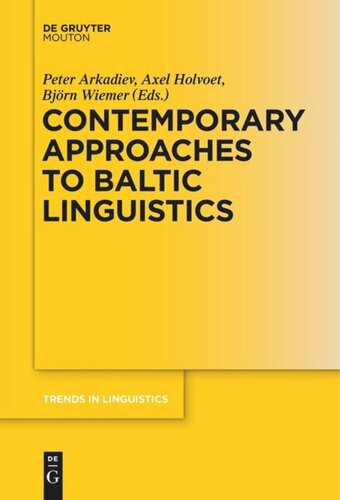

Most ebook files are in PDF format, so you can easily read them using various software such as Foxit Reader or directly on the Google Chrome browser.
Some ebook files are released by publishers in other formats such as .awz, .mobi, .epub, .fb2, etc. You may need to install specific software to read these formats on mobile/PC, such as Calibre.
Please read the tutorial at this link: https://ebookbell.com/faq
We offer FREE conversion to the popular formats you request; however, this may take some time. Therefore, right after payment, please email us, and we will try to provide the service as quickly as possible.
For some exceptional file formats or broken links (if any), please refrain from opening any disputes. Instead, email us first, and we will try to assist within a maximum of 6 hours.
EbookBell Team

4.1
100 reviewsThis book is a collection of articles dealing with various aspects of the Baltic languages (Lithuanian, Latvian and Latgalian), which have only marginally featured in the discourse of theoretical linguistics and linguistic typology. The aim of the book is to bridge the gap between the study of the Baltic languages, on the one hand, and the current agenda of the theoretical and typological approaches to language, on the other. The book comprises 13 articles dealing with various aspects of phonology, morphology, syntax, semantics, lexicon, and their interactions, plus a lengthy introduction, whose aim is to outline the state of the art in the research on the Baltic languages. The contributions are data-driven, being based on field-work, corpus research, and data published in the sources not accessible to the general linguistic audience. On the other hand, all contributions are informed in the relevant contemporary linguistic theories and in the advances of linguistic typology. Some of the contributions aim at a more detailed, accurate and theoretically informed description of the data, others look at the Baltic material from a more theoretical point of view, still others assume an areal-typological or contact perspective.